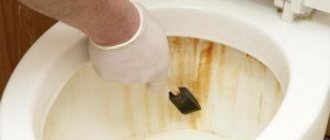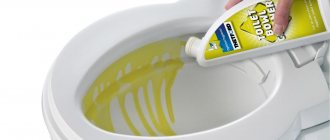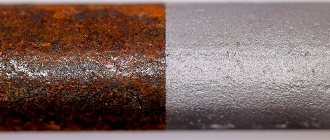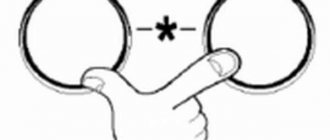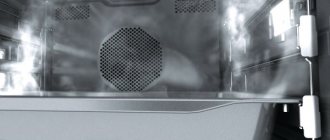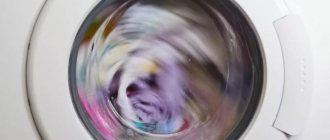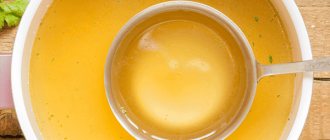Nowadays, when there is no longer practically clean water, we have to install a container for storing and using water in places where there is no water supply (dacha, country house). Water is a substance in which various forms of life develop and have adverse effects on the human body. Even in city water supply pipes there are enough harmful deposits that can cause harm to human health. Purifying water from germs and rust is a necessity for every person to maintain their health.
- Buy a used container or in a store
- Clean the used container from food residues
- Washing and cleaning the walls and bottom of deposits
- Disinfection of the container.
Now let's look at the entire cleaning stage one by one.
You can store drinking water in a used container in the same container that used to store food liquids: drinks, juices, wines, spirits, vinegar. It is strictly forbidden to use containers in which petroleum products or sewage were previously stored.
Before using the container, it is necessary to clean it of previous food residues . If possible, it is advisable to purchase a container with rounded corners and a closing lid; it is easier to clean it from food residues and deposits.
Prevention of unpleasant odors
The appearance of an unpleasant odor can be prevented by following these recommendations:
- You cannot leave unfinished water or other drinks inside; they must be drained;
- after each use of the container, it must be thoroughly rinsed with clean water;
- You should not tighten the cap if the bottle is empty but wet - such an environment is optimal for the growth of microbes;
- Once a week, the container should be washed with a soda solution - pour it overnight, rinse it in the sink in the morning, wash with clean water and dry thoroughly.
These simple steps will help prevent the appearance of unpleasant odors from plastic containers.
How to disinfect drinking water?
There are five ways to quickly disinfect a small volume of water:
- boiling;
- adding potassium permanganate;
- use of disinfectant tablets;
- use of herbs and flowers;
- infusion with silicon.
Interesting materials:
Who voices Malysharikov behind the scenes? Who is the woman voicing Malysharikov? Who voices Uncle Fyodor's mother? Who voices Margarita Egorovna? Who voices Master Shifu in Russian? Who voices Misa from Death Note in Russian? Who voices the cartoon Carlson? Who voices Nyusha from Smeshariki? Who voices the new Pechkin? Who voices the new Prostokvashino?
Nettle
Cleaning with nettles is attractive because it is environmentally friendly and absolutely free. You won't spend a penny. In this case, the eggplant will be as good as new.
What do we have to do:
- Wear gloves to avoid burning your hands with nettles.
- Pick 1-2 mature plants.
- Coarsely chop the stems with a knife. The tops with leaves can be thrown away.
- Push the nettles into the bottle.
- Add 1 liter of cold water.
- Chat until cleansed.
How to wash a bottle with a narrow neck, whether to use chemicals
There were absolutely no plans to use chemistry, after all, it is food that we use on our table, we drink it every day. Regarding chemicals, we already use enough of it, both from the urban environment and when washing dishes, even in small doses, but it still enters the human body.
I think chemicals should only be used when you need to wash the green stuff inside a plastic canister or when you need to wash a Eurocube. When washing food containers, perhaps in small quantities, purchase them in trusted stores that have proven themselves for a long time and comply with all safety standards.
I understand that this is my omission, as the owner of the house whose family may suffer from this, it acts gradually, getting into our body, but thank the Almighty, everyone is alive and well, but I immediately began to remove this form of cohabitants in our container.
How to clean a machine oil barrel for water.
It's a good barrel, it's a shame to throw it away. But it used to contain machine oil. I would like to use it for the garden/vegetable garden, for water, but I’m afraid to pour water - I might ruin the plants. Does anyone know how to dissolve the remaining oil?
4
Solution
I use two cans of machine oil to water my indoor flowers. Of course not barrels, but I think the difference is not great and not fundamental. First I washed it with diesel fuel. Then with caustic, as the Hungarian writes. There wasn't enough caustic for the second canister, so I used table soda. How did you wash? First, I mixed the soda in hot water, poured it into the canister not to the top and put it in the service Sobol. It floated around there beautifully, I even forgot about the first one, they only reminded me on the third day, isn’t it time to pick it up? Then use liquid soap a couple of times, leaving it overnight. That's it. Not only flowers drink this water, I tried it myself. I washed twenty-liter mash bottles in about the same way (only without using a car). This was a long time ago, I was still working at a factory, and in the electroplating industry there were good bottles for some “terribly harmful” chemicals, with convenient plastic baskets with handles. It was a sin to pass by, but during the night shift I carefully transported him over the fence, and after changing, he took him out. I also have a lot of laboratory glassware at home, all kinds of glass, with ground stoppers. The laboratory was disbanded, and the former boss gave it to me out of friendship. Well, basically, the scheme is as follows: solvent - soda - soap. The rest is details and nuances.
Is mold at the bottom of a plastic bottle dangerous?
Probably, many have encountered the appearance of a green coating inside an empty, tightly closed container. In such an environment, even a small amount of moisture contributes to the active proliferation of fungus, which can cause some harm to the human body. Such a container must be treated before refilling with clean drinking water. If this is not done, then the possible consequences manifest themselves differently in people. A list of the most common types of health problems and diseases is as follows:
- cough, asthma, pneumonia and diseases associated with the upper respiratory tract;
- attacks of headache, nausea, dizziness, constant feeling of fatigue;
- upset stomach, disruptions in the normal functioning of the digestive system;
- problems with the musculoskeletal system, joint and rheumatic diseases;
- dermatosis, mycosis and other skin diseases that arise on an allergic basis;
- internal bleeding, kidney and liver damage (with prolonged exposure).
How to clean the cooler in a computer. Step-by-step instruction
Disassembling the system unit
So let's get down to business.
- First, we need to disassemble the system unit; more precisely, we need to remove its side cover.
- To do this, turn the block towards you with its back side and use a “+” screwdriver to unscrew the 2 screws. Then press the lid and slide it forward.
- Next, we need to find out which of the coolers makes the biggest hum (noise), the one that is noisy and will be the most clogged. In order to find out which of them makes the most noise, turn on the computer and with the system unit lid open, listen to the hum of all the fans.
- After identifying the faulty cooler, so to speak, turn off the computer and disconnect the power cord from it.
As practice has proven, fan blades are most often susceptible to rapid clogging:
- video cards;
- power supply;
- processor.
Since we are not looking for easy ways, I will describe to you how to clean the power supply from dust and dirt.
Cleaning the power supply cooler
To do this we need to remove the power supply from the processor.
In order to put everything back together correctly, I recommend taking a few photos before removing the power supply and using them as a guide during assembly.
- We disconnect all the power supply wires from the motherboard, from the hard drives (hard drive), CD/DWD drives.
- Using a “+” screwdriver, unscrew the 4 screws on the back of the system unit, then carefully remove the power supply.
- Let's disassemble the power supply itself. Unscrew 4 screws.
- In the middle we see the cooler that we will clean.
- Unscrew the 4 screws that secure the cooler to the power supply case.
- Once unscrewed, use a vacuum cleaner to remove coarse dust from the blades and power supply board.
- Next, use a cotton swab to clean the fan blades. Also wipe with this swab or small brush all the elements of the power supply that you can reach. Such a brush can be made from any thin tube, for example, from a ballpoint pen, or from a lollipop and a thin fishing line that you can find.
And finally, lubricate the motor. On the cooler in the middle we see a round sticker; under it there is a fan axis and a bearing or bushing. In some coolers, after you remove the sticker, there is a round plug in the middle; you need to carefully remove it with a needle.
And only then will you see that very axis. Drop a drop of machine oil on this axis, then glue the sticker back on.
That's all. We cleaned the cooler without any difficulties.
We reassemble everything that has been disassembled in reverse order.
Be sure to read:
How to find out the wear level of a laptop or netbook battery?
How to run an ATX power supply without a computer?
What is the operating temperature of the processor?
How to properly assemble a computer from components yourself
Cleaning the container from residual liquid products
First you need to drain the remaining food liquid from the tank. It must have a drain valve located in the rear. To do this, the tank must be tilted so that the remaining liquid is completely drained. It is advisable to pour the liquid into a container and then remove it to a safe place. In stationary tanks, a flush tap is provided at the bottom. If such a tap is available, it is better to use it rather than a regular drain tap.
After draining the remaining food liquid, the container must be rinsed . For initial rinsing, you can use regular washing powder or dishwashing detergent diluted in hot water. If the neck of the tank allows a person to get inside, then you can use a stiff brush with a short handle and a bucket of cleaning solution.
If the neck is narrow, you can use a brush with a long handle. Thoroughly rinse the walls and especially the corners so that not even a small fraction of residual liquid remains. Even a small part of the initial liquid residues can spoil the taste of water. After thorough rinsing, you need to open the drain valve and pour the solution into a container to subsequently remove the liquid to a safe place.
Using a hose or hydraulic remote control, thoroughly rinse the walls and bottom . If such washing is not available, you need to pour a cleaning solution, “preferably hot,” into the container and leave it for several hours. After this, you need to rinse the container until there are no traces of the cleaning solution left. Discard the solution in a safe place.
Helpful information
Tips for getting rid of bad smell from a bottle:
To get to the bottom, you can use a long thin dish brush or a toothbrush of a suitable size.- You need to thoroughly wash not only the bottle itself, but also its lid. Sometimes it becomes the source of an unpleasant aroma. Particular attention should be paid to the grooves.
- After using any product, the container must be rinsed at least 3-5 times with clean water.
You will find a lot of useful and important information about removing various unpleasant odors from objects and surfaces in this section.
Baking soda and eggshells
This recipe is good because it helps to further disinfect the bottle and kill germs.
- Prepare a 5% soda solution: dissolve 50 g of baking soda in 1 liter of warm water. In total you will need approximately 5 liters. The solution should cover the most contaminated area - the bottom.
- Pour the liquid into a bottle (it’s convenient to do this through a funnel).
- Leave the stains to soak for 2 hours.
- At this time, make a cleaning powder: grind the shells of 4-5 chicken eggs (about two handfuls). Any shell will do, both raw and boiled. There is no need to grind it into flour, just roll it out with a rolling pin.
- Pour the shells into the eggplant.
- Close the lid and shake so that the liquid rotates in a circle.
- After 3-4 minutes, drain the green solution.
- Rinse the eggplant with clean water 2-3 times.
Sharp shells mechanically remove plaque without scratching the plastic. The walls become transparent again. And all this with a minimum of effort.
Why mold occurs and how to prevent it
If we go deeper into biology, moldy plaque is unicellular algae. Their invisible spores fly in the air and fall into any open container. Every time a person unscrews a canister, there is a risk of such “infection”. Once in a favorable environment, the spores multiply and grow.
Green mold, like any plant, requires light and warmth. Sunny is better, but artificial is also suitable. Therefore, such deposits almost never happen in bottles stored in a dark place. And it develops most actively from April to September.
Simple steps to help prevent greens from appearing in plastic containers:
- store water in a dark pantry;
- do not place containers near heating devices;
- avoid sunlight;
- do not keep the canister open - the longer it sits without a lid, the higher the risk of spores getting in;
- do not touch the open neck with your hands - there are spores on the skin;
- do not let the water “stagnate” - the canister should be used up within 2-3 weeks.
